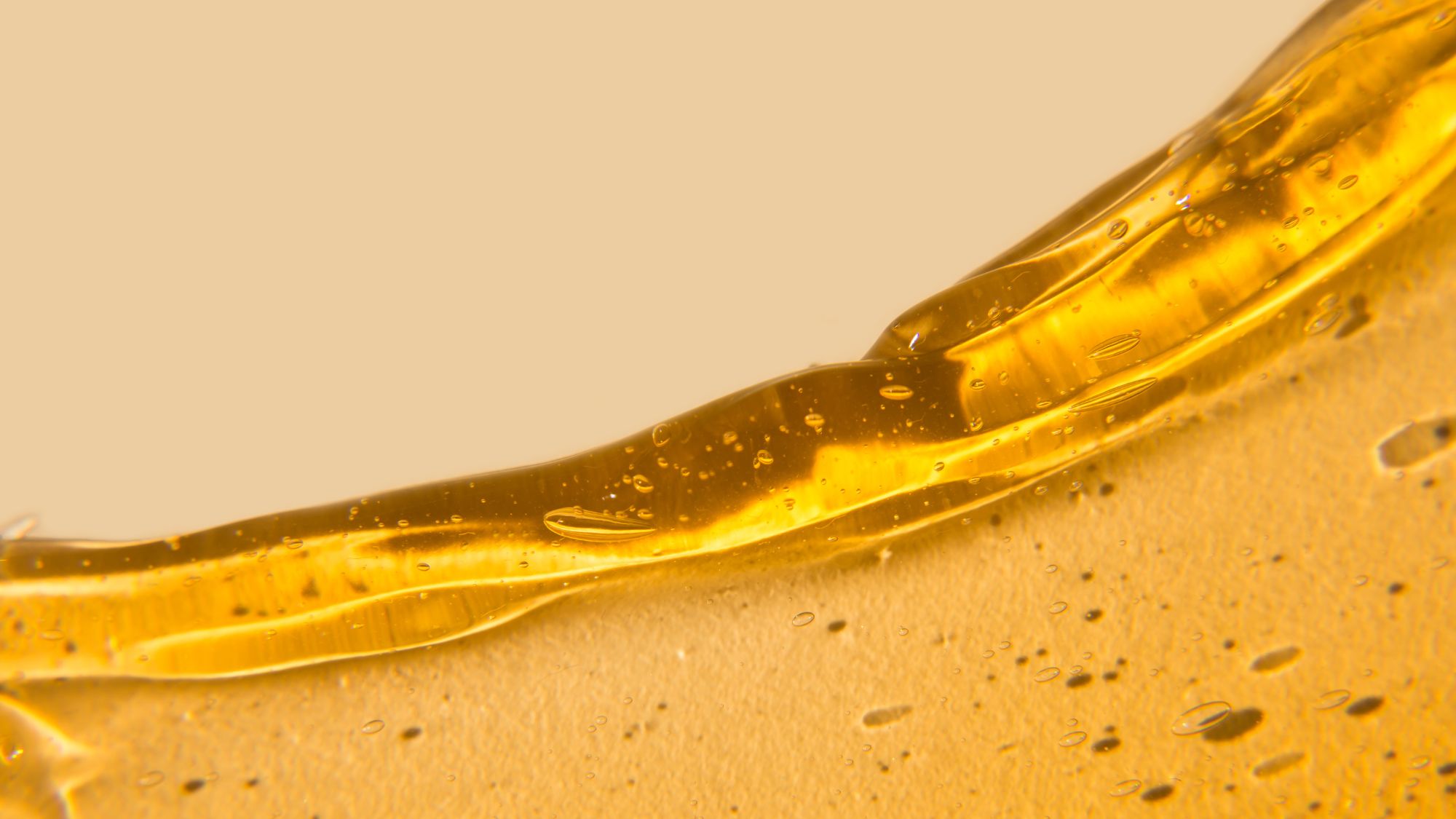How to prevent and treat spots after waxing, according to skin experts
Post-wax bumps become my enemy every summer, here's how to stop spots after waxing once and for all


Let's be honest, spots after waxing are the worst. For me, bumps and spots after waxing make the pain of waxing in the first place completely futile. (I'm even wondering if it's time to try an IPL device.)
In the world of beauty, there is nothing quite as painful as getting your legs, bikini line, face or eyebrows waxed—and it's made even worse when you're faced with post-wax breakouts.
But while bumps and spots after waxing are a real issue for me, as a beauty journalist, I can't bring myself to give up waxing forever, nor do I want to. So I set myself the task to asking those in the know on how to *really* stop spots after waxing. So here's everything they want us to know...
Meet the experts:
- Holly Webster, Head of Spa, OSKIA
- Dr Ahmed El Muntasar GP, and Award Winning Aesthetician
- Dr Glyn Estabenez, Aesthetic Doctor at Prima Aesthetics, Chester
- Dr Paris Acharya, Leading aesthetic doctor and face surgeon at Waterhouse Young clinic
- Sarah Amelia Fogg, celebrity brow expert and founder of Brows by Sarah
What causes spots after waxing?
Good news—if you are prone to spots after waxing, you're not alone. "It is fairly common for there to be a little redness and bumpiness following a waxing appointment, especially as each of those hairs had their own blood vessel which supplies blood for growth," says Webster.
This kind of redness and post-wax bump or spot usually disappears by the following day. If your spots are persisting for longer, listen up. "It could be folliculitis or dermatitis, meaning that the follicle is inflamed or there has been a reaction," Webster tells us.
"With a lot of marks that happen from shaving or waxing, it could be heat irritation or it could be from the trauma of pulling the skin. Skin of colour is prone to post-inflammatory hyperpigmentation from the trauma and heat of it and that can cause pigmentation," Dr El Muntasar explains.
Marie Claire Newsletter
Celebrity news, beauty, fashion advice, and fascinating features, delivered straight to your inbox!
If it's none of the above, you could be dealing with an ingrown hair. "Ingrown hairs can also cause a bump. They would usually appear within a week or two and can become quite inflamed and painful depending on their location and severity," adds Webster.
"One of the reasons spots or bumps occur after waxing is that when the hair is pulled out from the root, it can create tiny openings in the skin that allow bacteria to enter, resulting in infection and the formation of pus-filled spots. Also, waxing can cause the skin to become dry and dehydrated, leading to the development of rough, flaky patches that can become irritated and itchy," says Dr Estabenez.
How to prevent spots after waxing
I know you probably don't want to hear it if you're already suffering with spots after waxing but preventing them is all in the prep.
Preventing ingrown hairs is key here. "It's great to get into a regular exfoliation routine to keep skin smooth, supple and free of ingrown hairs," says Webster. "Traditionally that meant using physical exfoliators (such as OSKIA Renaissance Body Scrub), however now there are now formulations which chemically exfoliate (with ingredients such as AHA & salicylic acid) as well as having calming and soothing ingredients inside too," she continues.
Exfoliation is key to bump-free hair removal because "the exfoliation process will ensure that any excess dirt and oils that are clogging up your pores are removed," says Dr Acharya. "It is this dirt and oil in your pores that causes breakouts. I would recommend exfoliating at least 3-5 days before your waxing appointment so that the skin settles and is not sensitised during waxing."
After your waxing appointment you may be told not to exercise, and if you're waxing at home here is your reminder. "Exercising can also make your waxing breakouts worse as sweating can make the skin vulnerable to spots. Therefore I'd recommend sticking to light exercise for 2-3 days after waxing or until your pores have closed up." Dr Acharya explains.
Top tips for preventing spots after waxing
- Exfoliate in the weeks leading up to the wax appointment
- Hydrate with serums and oils
- Avoid applying make-up until at least 24 hours after the appointment
How to prevent spots after waxing your face or brows
The expert tips from above apply for the face too, but there are some steps specifically for the face which are super important.
To avoid spots after waxing on the face, you may need to rethink your skincare routine. "Avoid retinol for one week either side of your appointment. Retinols decrease the thickness of the outer layer of the skin, which therefore removes a protective layer. This means that waxing could damage your skin and could even result in long-term scarring," says Dr Acharya.
"If you have had your brows waxed, avoid any extreme heat such as hot showers, baths and saunas for 48 hours as sweating can worsen the breakout. This is because the bacteria can get into your open pores after waxing," warns Fogg. "I always recommend leaving your brows untouched for a good few days after waxing as this will let them properly heal and settle. At most, a clear brow gel will tidy and groom the brows while letting them get back to normal."
How to prevent spots after at-home waxing
How you wax is key to preventing spots after waxing. "The techniques vary, whether using warm/strip or hot wax," says Webster. "Seek professional advice or tips on how to wax if you’re doing it yourself." (Or check out our in-depth guide to waxing at home here).
"Start off with making sure that the skin is nice and clean, just so you have more contact surface. Make sure that the skin is exfoliated, as well, to help with erecting the hair follicles so that the hair is a bit easier to rip off. Make sure the wax isn't too hot, as that can cause irritation, too," explains Dr Ahmed.
How to treat spots after waxing
"If you develop spots or bumps on the body after waxing, I would firstly recommend placing a cold compress on the inflamed area or taking a cold shower as this will help to reduce the irritation of the skin," says Dr Acharya.
Immediately after waxing "make sure you apply something that can help soothe things and wear loose clothing to make sure that the skin is not exposed to a lot of trauma," Dr Ahmed tells us.
The general consensus amongst experts is to avoid any perfumed products for at least 24 hours. "Perfumed products tend to irritate sensitive skin, so you want to make sure that you're using gentle products," Dr Acharya explains.
Once you've allowed the skin to rest, "think calming, soothing, hydrating and keep it simple," says Webster.
For treating spots after waxing on the face, after a brow or upper lip wax, Dr Acharya recommends "sticking to a very stripped-back, simple skin routine for 2-3 days after to avoid any further irritation".
"Once the inflammation disappears, if the facial spots continue I tend to suggest products with salicylic acid, such as Blemish Control Bar from PCA Skin. This helps to remove excess oil from the pores (which have been opened due to waxing) and exfoliates dead cells from the surface of the skin. Products containing benzoyl peroxide kill acne-causing bacteria and help reduce inflammation, too," adds Dr Acharya.
Tips for treating spots after waxing
- Cold compress on the inflamed area or a cold shower
- Wear loose clothing
- Avoid perfumed products and oils
- Hydrate the skin
Dionne Brighton is a writer at Marie Claire UK, specialising in all things shopping, beauty and fashion. Born and raised in North London, she studied Literature at the University of East Anglia before taking the leap into journalism. These days, you can find her testing out the latest TikTok beauty trends or finding out what the next full Moon means.
-
 Vintage sales, flower festivals and unique brunches - 7 fun and frivolous things to do this bank holiday
Vintage sales, flower festivals and unique brunches - 7 fun and frivolous things to do this bank holidayBy Jadie Troy-Pryde
-
 How Ben Affleck feels about dating after his divorce from Jennifer Lopez
How Ben Affleck feels about dating after his divorce from Jennifer LopezHe's taking it slow
By Iris Goldsztajn
-
 Dior travels to Kyoto for a cherry blossom-inspired fashion show
Dior travels to Kyoto for a cherry blossom-inspired fashion showHere's everything you need to know
By Clementina Jackson



